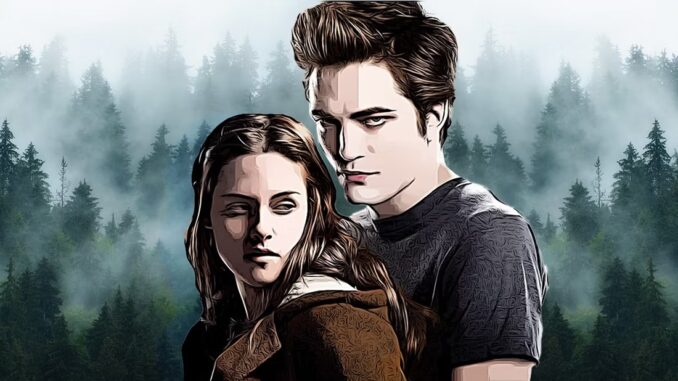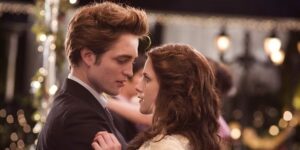
In 2008, popular culture didn’t know what it had coming, and neither did Kristen Stewart and Robert Pattinson. The Twilight movie franchise, which brought to life author Stephenie Meyer’s young adult book series, started a cultural revolution as teens, tweens, and adults stormed the stage to watch such a prolific romance on the big screen. It’s a profound impactful and earnest retelling of the source material that has spawned countless memes, jokes, and satires based on its content in the process.
Despite how well it carries the original novel’s theatrics to the big screen, the films have been mocked for how its melodrama often strikes as laughable rather than devastating and how its angsty dialogue, while perfect for a dramatic novel, appears hilariously fake in live-action . It’s this widespread criticism of the movie that has fans nervous with the recent announcement that the books will be adapted into an animated series by Lionsgate, though they absolutely should not be. In fact, they should be overjoyed. Because Twilight, as Meyer wrote almost 20 years ago, is an expansive, enthralling, deeply complicated story, and an animated series is the perfect medium to tell it.
Twilight Has More Opportunities in Animation

While animation is typically associated with kids’ movies and TV shows, many complex, adult stories thrive across genres in the medium. From the intergalactic horror of Scavenger’s Reign to the candy-colored introspection of Steven Universe and the gritty world of superheros in Invincible, this style of storytelling has proven itself to be extremely capable of telling complicated stories. Even more, in a current world where movies are mocked for shoddy visual effects, there is a huge benefit in how animation allows creators complete control of every aspect of every scene. By not being limited to the restrictions of the natural world, animation brings imaginative concepts to brilliant life in a way that no digital or practical effect could ever accomplish. It is the perfect platform to broadcast dynamic, emotional stories, which makes it perfect for Twilight.
When the movie was released in 2008, it took over Hollywood, not only because of how it made studios realize how profitable the young-adult market could be, but also because it introduced a whole generation of watchers to an innovative approach to romance that is still imitated today. Because of Twilight and its fame, so many other novels have been allowed a chance by production companies that would likely never have looked at them otherwise.
Yet despite this significance, the years since its premiere have seen the film become an online meme. From Kristen Stewart’s and Robert Pattinson’s wooden acting as the central couple to the edgy dialogue and effects, it has long earned the mockery of fans who find its attempt at imbuing this dramatic story with laughable gravitas. Even more, despite the film costing itself some seriousness by emulating the book’s dreary tone, it is still disappointed so many of the novel’s fans with how much of the original story was lost in the transition to screen. No matter the monumental effort of everyone involved, there was no way for Twilight to please everyone, leading to it disappointing both readers and non-readers to varying degrees. An animated series not only has a chance to improve on its mistakes in unique ways, but also expand storylines that felt shortchanged.
The Twilight Franchise Needs To Be More Creative
No matter how accurately the Twilight franchise adapts its namesake novels, it was always going to earn scorn from viewers. The story of a 104-year-old high schooler full of angst over his long life (and a surprisingly complex vampiric political system) falling in love with an equally troubled teenage girl is a rather unserious premise, and that’s before the even more wild aspects of the large franchise are revealed. This concept achieved such fame because of Stephenie Meyer’s writing prowess and her ability to tell a genuine love story, which granted this farcical plot the gravitas it needed. While the movie did its best to replicate this by stripping the thousands of words of context, internal dialogue, and minute emotions, it could never end viewers with the heartbreaking experience that reading the book brought on. And how could it, when any attempt to shorten a 498-page novel into a 2-hour movie would inevitably cost watchers the smaller moments that create a fully realized and beautiful world. Trying to portray this tragedy through the constraints of average filmmaking would only partially present what made the book so great, making it clear that a live-action movie was never the correct medium to try and tell this story.
